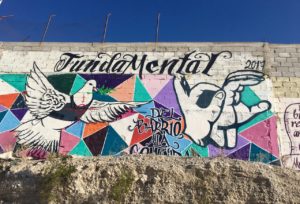Marlon Carranza, Forscher an der Universität Leipzig, beschäftigt sich mit der amerikanischen Gang »Mara Salvatrucha« und ihren Ablegern, die im Zuge der Globalisierung durch Migrationsbewegungen entstanden sind und sich von der Ursprungsorganisation unterscheiden.

»In 2006 Arjun Appadurai published his book Fear of Small Numbers: an Essay of the Geography of Anger, to evaluate “the darker sides of globalization” (p.3). Appadurai’s main argument was that material goods and ideologies circulate now with such intensity across national boundaries that “a new order of uncertainty” (p.5) is globally created. This uncertainty has produced, of course, violence; but even more, Appadurai argues that violence itself has become “a macabre form of certainty”. For that reason, he continued, globalization needs to be analyzed in “this volatile relationship between certainty and uncertainty” (p.6).
Appadurai’s words resonate with my own research about Maras, a gang organization that was born in Los Angeles in the 1990s by initiative of Central American immigrants but that has been claimed to have expanded globally. There is nothing more volatile than trying to find evidence of the global presence of Mara Salvatrucha and 18th Street gangs in some of the areas where their existence had been claimed by the media and others. Let’s just take an example: In June 2015, an 18 year old man attacked a ticket inspector inside a Milan train after he had been asked for his ticket. The young man carried out the attack with a machete that cut off the ticket inspector’s left hand completely. According to the media, the young man was thought to be part of Mara Salvatrucha (MS-13). Although the gang affiliation of the attacker was never confirmed, for those who read the news in Milan and around the globe, there was no doubt that there was at least some certainty about the event: a violent action and a person responsible. I argue however, that there are other certainties that are less visible, and that those are linked to the global circulation of violent events by electronic media. It is certain that confirmed and unconfirmed images (news, discourses, narratives, etc.) of gang violence have been used globally to reinforce different ideological agendas in multiple nation-states. Those images have helped to reinforce punitive immigration policies in the United States, the return of military power in Honduras, the increase of national security budged in El Salvador, the inaugurating of the first anti-gang task force in Costa Rica, and the creation of different versions of spaces of exception in all of the previously mentioned countries.«
Lesen Sie den vollständigen Artikel auf unserem Trafo-Blog.
Bild: Graffiti from a gang violence prevention program in Ciudad Juarez, México. Fieldwork, March 13th 2018. Foto: Marlon Carranza.

